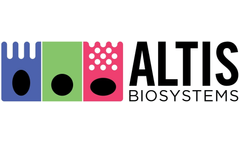Intestinal Cell Articles & Analysis
23 articles found
Key parameters include: Cryoprotectant composition: Trehalose-based formulations demonstrate superior protection for cell-associated enzymes compared to sucrose-based alternatives, with 2.3-fold higher β-galactosidase retention. ...
Background of Caco-2 Cells Caco-2 cells are derived from human colorectal carcinoma and possess characteristics that mimic intestinal epithelial cells. ...
Types of In Vitro Permeability Assays Various methods are employed in in vitro permeability assays, each suited for different purposes: Caco-2 Cell Model: This assay uses human intestinal epithelial cells, which mimic the intestinal barrier. ...
Metabolism is usually divided into two categories: catabolism, which breaks down large molecules for energy (e.g., cellular respiration), and anabolism, which uses energy to synthesize components of the cell, such as glycogen, proteins, and nucleic acids. Metabolism plays a key role in the fields of physiology, cell biology and medicine. ...
After entering the blood circulation, short-chain fatty acids can affect the metabolism of many peripheral tissues such as liver, adipose tissue and skeletal muscle. Intestinal flora affects the hormone secretion that regulates intestinal endocrine cells Intestinal flora can regulate the development and function of ...
As ingested dietary fats make their way to the small intestine, they arrive as large, unwieldy fat droplets. Here, bile acids perform their first act: emulsification. ...
Diamine oxidase (DAO) is an intracellular enzyme that catalyzes diamine in mucosal or ciliated epithelial cells of the mammalian small intestine. It protects the intestinal mucosa by regulating intracellular ion homeostasis, influencing conduction pathways, and promoting cellular repair. Serum DAO is elevated in small intestinal ...
Created for parents, by parents. No parent expects the news. So when you receive the news of a Short Bowel Syndrome diagnosis, it’s only fair that it’s a little overwhelming. Your picture of what the future of your family looks like begins to shift, and you have to shift with it. Let’s start off by saying, you’re not alone. There are parents, caregivers and family ...
Lactase is a disaccharidase present on the surface of mammalian small intestinal mucosal microvilli, and many beneficial intestinal bacteria have the ability to produce lactase. ...
When we talk about intestinal bacteria or dietary fiber, we often hear about "short-chain fatty acids". ...
The large intestine is composed of intestinal epithelial cells (IECs), which form an intestinal barrier between the microbiota in the intestinal lumen and surrounding tissues. ...
Caco-2 cells are the most commonly used in vitro intestinal model and have become industry standard. ...
Probiotics are beneficial to the health of the host, and can help inhibit intestinal pathogens, reduce lactose intolerance, and improve constipation. ...
Advanced microphysiological systems can replicate aspects of intestinal complexity, such as epithelium self-renewal by stem cells in in vitro crypts or the interactions of microbes and intestinal epithelium mediated by a mucus layer. ...
Caco-2 cells have historically not been reproducible across research labs, generally represent a single differentiated intestinal absorptive cell, and are derived from a non-healthy, colonic cell type. Caco-2 cells do not accurately reflect the physiology of small intestinal epithelial ...
Human intestinal stem cells, by contrast, are already epigenetically modified to limit them to a range of differentiated types but are then free to form the appropriate diversity of intestinal epithelial cell types. As such, the Altis system uses primary human stem cells to generate a platform that mimics real ...
The RepliGut® platform produces a polarized monolayer of human intestinal stem and differentiated cells — either of the large or small intestine — that can be used for modeling diseases or screening compounds for effects on the intestine. ...
Based on human intestinal stem cells, RepliGut® eliminates the issues associated with the use of colon cancer cells. ...
Intestinal and Colonic Stem Cells and Disease Stem cells are implicated in a variety of disease process. ...
Sub-health: Hydrogen can penetrate deep into the tissue or cell membrane space, activate cell tissue, improve the state of stress, and is a younger body. Malignant tumor: It can prevent the infinite division of cancer cells and change them into healthy cells with the same life span as ordinary cells. ...







